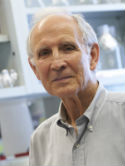| Abstract: |
BACKGROUND. Gastrointestinal stromal tumor (GIST) is the most frequent sarcoma of the intestinal tract and often shows constitutive activation of either the KIT or PDGFRA receptor tyrosine kinases because of gain-of-function mutation. Although the efficacy of tyrosine kinase inhibitors in metastatic GIST depends on tumor mutation status, there have been conflicting reports on the prognostic importance of KIT mutation in primary GIST. METHODS. A total of 127 patients were studied who presented to our institution from 1983 to 2002 with localized primary GIST and underwent complete gross surgical resection of disease. The majority of tumors originated in the stomach (58%) or small intestine (28%). By using polymerase chain reaction (PCR) and direct sequencing, a KIT mutation was found in 71% of patients and a PDGFRA mutation in 6%. RESULTS. After a median follow-up of 4.7 years, recurrence-free survival was 83%, 75%, and 63% at 1, 2, and 5 years, respectively. On multivariate analysis recurrence was predicted by ≥5 mitoses/50 high-power fields, tumor size ≥10 cm, and tumor location (with patients having small bowel GIST doing the worst). In particular, a high mitotic rate conferred a hazard rate of 14.6 (95% confidence interval, 6.5-32.4). Specific KIT mutations had prognostic importance by univariate but not multivariate analysis. Patients with KIT exon 11 point mutations and insertions had a favorable prognosis. Those with KIT exon 9 mutations or KIT exon 11 deletions involving amino acid W557 and/or K558 had a higher rate of recurrence, whereas patients without a tyrosine kinase mutation had intermediate outcome. CONCLUSIONS. In the absence of therapy with tyrosine kinase inhibitors, recurrence in completely resected primary GIST is independently predicted by mitotic rate, tumor size, and tumor location. © 2007 American Cancer Society. |










